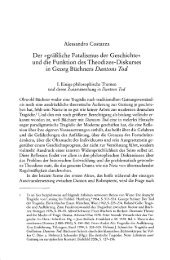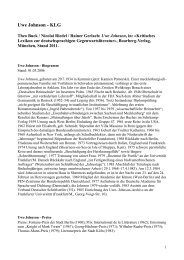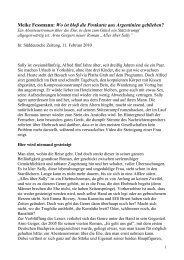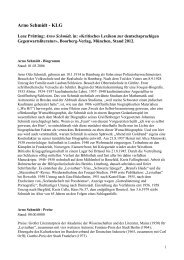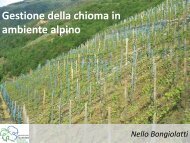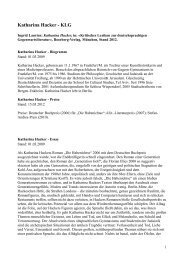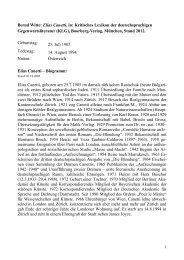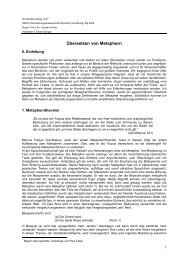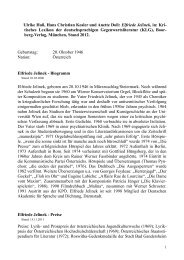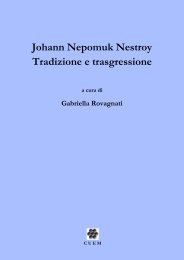Volume of Abstracts - Università degli Studi di Milano
Volume of Abstracts - Università degli Studi di Milano
Volume of Abstracts - Università degli Studi di Milano
You also want an ePaper? Increase the reach of your titles
YUMPU automatically turns print PDFs into web optimized ePapers that Google loves.
5 th Int. Workshop on Ice Caves (IWIC – V)<br />
Barzio (LC), Valsassina, Grigna and <strong>Milano</strong>, September 16 – 23, 2012<br />
<strong>Volume</strong> <strong>of</strong> <strong>Abstracts</strong><br />
IKAITE IN THE SCĂRISOARA ICE CAVE (ROMANIA): ORIGIN AND<br />
SIGNIFICANCE<br />
Onac B. P. 1 , Wynn J. G. 1 & Citterio M. 2<br />
1 University <strong>of</strong> South Florida, Department <strong>of</strong> Geology, Tampa, USA (bonac@usf.edu)<br />
2 Department <strong>of</strong> Marine Geology and Glaciology, Geological Survey <strong>of</strong> Denmark and Greenland,<br />
Copenhagen, Denmark<br />
Ikaite, CaCO3·6H2O, is a rare, metastable carbonate mineral first identified<br />
in submarine reef-like columns growing from the bottom <strong>of</strong> Ikka Fjord (SW<br />
Greenland) at temperatures between -1.9 and 7ºC. Inactive tufa towers<br />
found along the shore <strong>of</strong> Mono and Pyramid lakes in western US are<br />
believed to represent former ikaite structures that were converted to<br />
calcite. These sites, along with two others in Japan and Patagonia are so<br />
far the only terrestrial occurrences <strong>of</strong> ikaite. Notes reporting its presence in<br />
ice accumulations and icicles around some saline springs from Shiowakka<br />
(Japan), prompted us to search for ikaite in the perennial ice deposit <strong>of</strong> the<br />
Scărisoara Ice Cave.<br />
A reconnaissance mineralogical study undertaken between 1996 and 2000<br />
pointed out the presence in the glacial and periglacial sectors <strong>of</strong> the cave <strong>of</strong><br />
large surfaces covered with thousands <strong>of</strong> micro-pearls (< 400 µm), pearl<br />
conglomerates, fibrous efflorescent calcite (var. lublinite) as well as<br />
monohydrocalcite. Except for monohydrocalcite, the deposition <strong>of</strong> all the<br />
other mineral phases are triggered by freezing <strong>of</strong> dripping and seeping<br />
water. In ad<strong>di</strong>tion, phosphate minerals and abundant organic material<br />
(leaves, branches, logs) are common in many parts <strong>of</strong> the cave.<br />
Two types <strong>of</strong> ikaite were positively identified by XRD and environmental<br />
scanning electron microscope stu<strong>di</strong>es: 1) various crystal shapes (< 670 µm<br />
across) forming white-light cream patchy accumulations within certain ice<br />
layers and at the surface <strong>of</strong> ice stalagmites/domes, and 2) glendonite<br />
(calcite pseudomorphs after ikaite), typically shaped as rosettes (up to 4.7<br />
cm). Glendonite samples were found protru<strong>di</strong>ng out from the ice tongue in<br />
the Great Reservation. Considering the particular cave settings and<br />
microclimate (temperature is always below 2ºC) in which the two types <strong>of</strong><br />
ikaite occur, it appears that they were cryogenically precipitated. This<br />
preliminary conclusion is largely based on similarities between the stable<br />
isotope signature in cryogenic calcites and two glendonite samples<br />
recovered from the Great Reservation in Scărisoara Ice Cave.<br />
The high δ 13 C (0 to 10‰) and δ 18 O (-1 to -10‰) values, typical for<br />
cryogenic carbonates in Scărisoara Ice Cave, are due to rapid water<br />
freezing that is accompanied by swift kinetic CO2 degassing. In comparison<br />
to the cryogenic calcite samples, the very low δ 13 C values (-14‰) found<br />
for the ikaite precursor <strong>of</strong> glendonite, implicate biogenic CO2, as the main<br />
carbon source for its precipitation. Therefore, glendonites may be<br />
54




